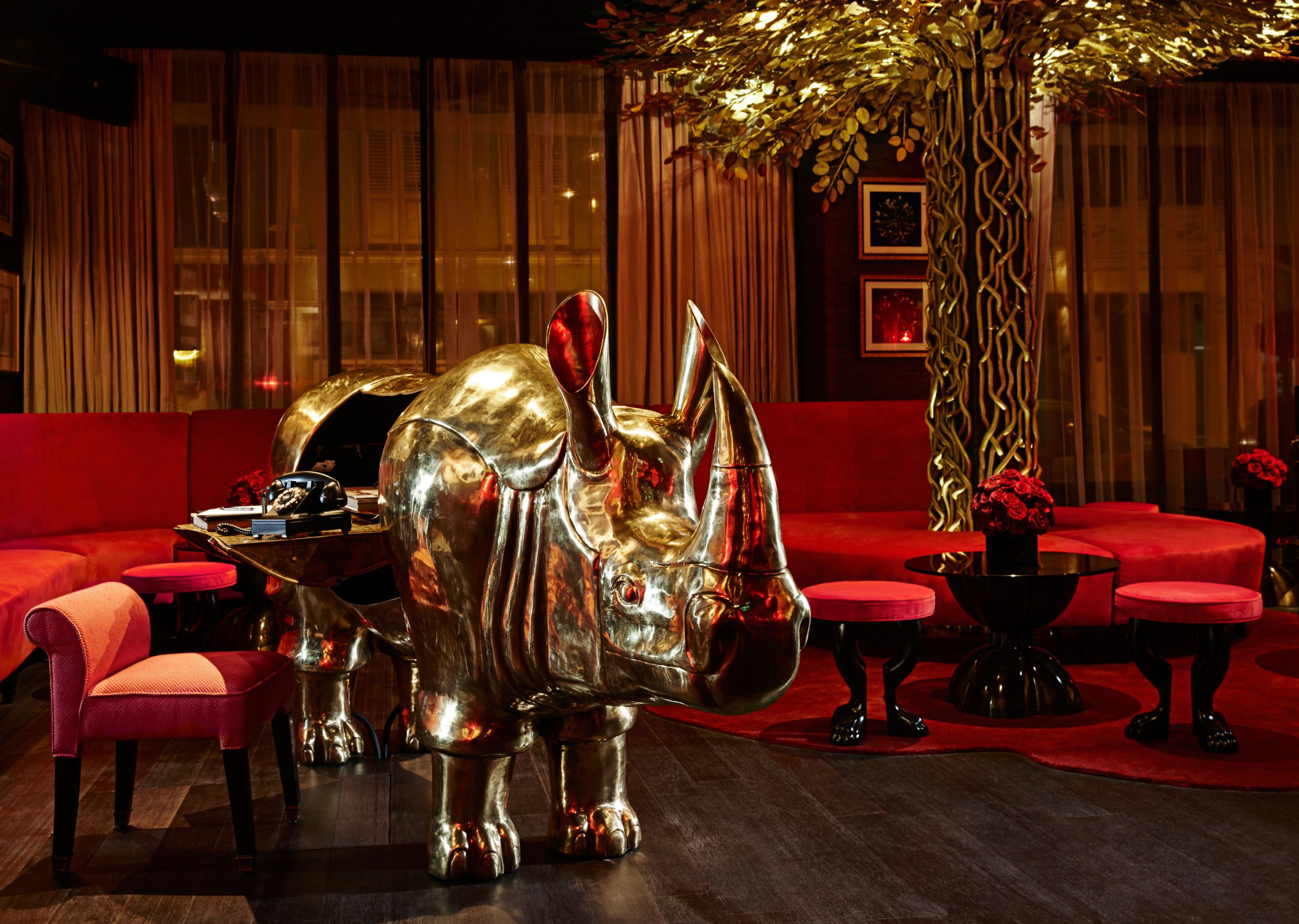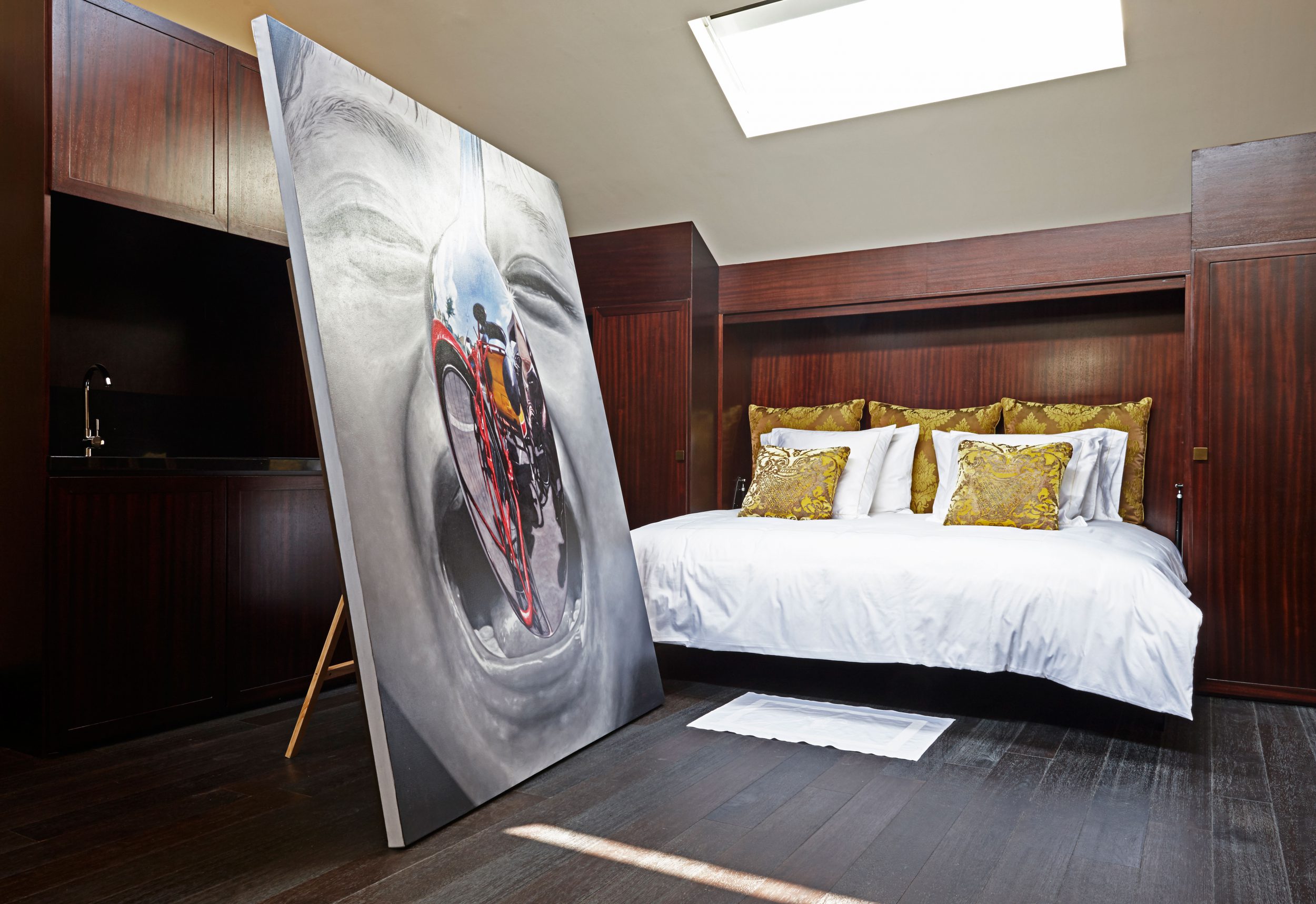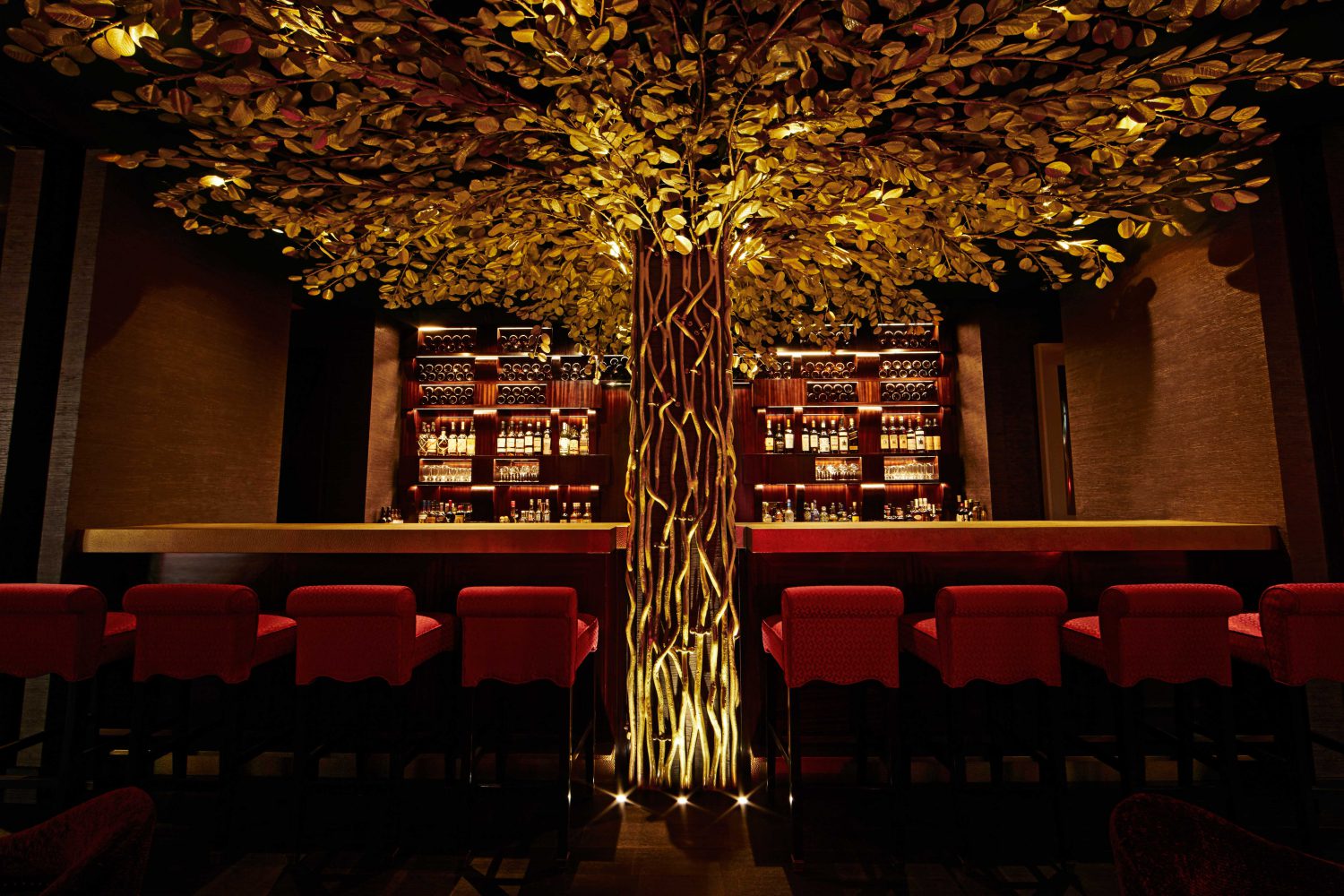There’s an art-house video screening in the elevator, playing a very clever moving montage of the greatest moments in epic films and causing a queue of people who really don’t wish to go up or down. I recognise the slow motion bone rising into the air from 2001: A Space Odyssey, Ben Hur’s chariot, Riff-Raff from The Rocky Horror Picture Show and countless other vignettes from Marvel to de Mille, all orchestrated rhythmically to Prokofiev’s stirring Romeo and Juliet. Check-in at Hotel Vagabond in Singapore is a relaxed affair, over coffee while seated on a plush red sofa. Unhurried and cool, this is a rather different hotel, the embodiment of French designer Jacques Garcia’s philosophy, all things in excess.

In the bar, a large block of blue, oxygenated ice with not a bubble to be seen (they vibrate them out during freezing) is being hand-carved, with all the care of a diamond cutter, into cocktail-sized cubes. “I wonder if this is the best use of staff time?” muses Harpreet, one of the hotel owners. A stirring, original cocktail named Ashes and Snow melds plantation dark rum, charred pineapple, lime, salt, charcoal and Chartreuse elixir. My attention is also engaged by a gin called Death’s Door, a 42-year-old Glendronach at SG$368 per glass, and a stylishly dressed bottle of Bruichladdich, an unpeated and unfiltered single malt.
The back wall of the strategically-lit lounge is curated by London artist Peter Millard. Pride of place must be the large, controversial piece by León Ferrari depicting the crucifixion of Christ on a US fighter plane, upstaging the original black and gold standing screen from the movie Pretty Woman nearby. Our bedroom displays one of international polo-playing millionaire owner Satinda Garcha’s own photos of Mongolian polo players, and the mini bar is stocked with artisan snacks and boutique booze. This is definitely an art hotel.

However, it is the location of Hotel Vagabond that makes it truly exceptional. It is in Little India, the only untidy, even chaotic, part of the city-state. This area was the ‘home of hobos and vagabonds’, and it still offers very cheap market food in food halls with hosed-down floors, and more upmarket meals using unexpected parts of animals that could prove quite educational. When I visit, it is the Diwali festival of light, and the evening streets are thronged with Indian men talking, shopping, sitting to drink beer, and searching for free Wi-Fi. In the shops, a slow motion retail riot becomes a bazaar as women fill baskets with trinkets and food. Tropical rainstorms add to the flood of humanity.
A bespoke series of walking maps guides guests through the neighbourhood, including Kampong Glam and the Beach Road area where at one bar, Divine Wine Society, a waitress known as an ‘angel’ has to hook herself onto a pulley to retrieve bottles from the three-storey-high chiller. This is hip bar territory, though most are hidden behind unimposing doors, betrayed only by the music. “Genuine Bollywood dancers,” touts one doorman in our direction, and indeed they were. Rejoicing in its unlikely location, theatrical, attentive, and fanatical about style and art, Hotel Vagabond is the place to stay in Singapore.

